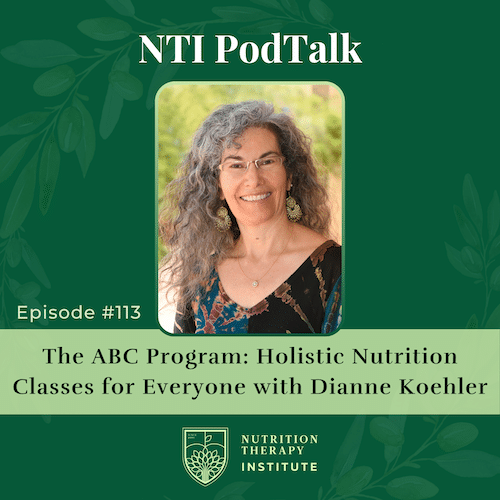
Share this post!
Good fats, bad fats, trans fats, interesterified fats. Say, what a lot of fats there are! Want to know what interesterified fat is? I do not know, go ask your nutrition therapist.
In short, they are the food industry’s replacement for partially hydrogenated oils. Interesterification modifies liquid vegetable oils to be firmer, more shelf-stable, and spread easily on toast, but without the trans-fats.
Interesterified fats are found in ultra-processed foods such as spreads (margarine or butter alternatives), bakery products, biscuits, and creamers (including non-dairy alternatives).
Before we get into the nitty-gritty about the pros and cons of interesterified fats from a holistic perspective, we first need to learn just what an interesterified fat is. In order to do so, we begin with the basic chemistry and properties of fats.
The Anatomy of a Fat Molecule
Fats, also known as lipids or triglycerides, are one of the three macronutrients that we use to derive energy. The primary form of dietary fat (about 95%) comes in the form of triacylglycerols, aka triglycerides.

As you can see from the diagram above, a triglyceride contains a glycerol backbone with three fatty acids attached. The fatty acids attached can be saturated, monounsaturated, and polyunsaturated. Note the positions along the glycerol molecule (sn1, sn2, and sn3), as these will be important later.
Foods in nature typically contain all three types of fatty acids in various proportions. In fact, when a food is considered to be high in saturated fat it simply means that it has a higher ratio of saturated fatty acids than the other types.
The proportions of these types of fatty acids influence the characteristics of the fat, including whether it is liquid or solid at room temperature. Saturated fatty acids are straight chains, which enables them to layer closely to one another resulting in a denser, solid fat at room temperature. The double bonds in mono and poly-unsaturated fatty acids provide “kinks” in their spatial arrangement (when they are in the naturally occurring -cis position), therefore they take up more space and the resulting fat is liquid at room temperature.
Another characteristic influenced by the type of fatty acids on a triglyceride molecule is shelf-stability. The double bonds in mono and polyunsaturated fats are relatively unstable. That is, they are more prone to reactions when they come into contact with light, oxygen, heat, or other molecules than saturated fatty acids.
Texture and shelf stability are important characteristics when considering which fat to use for cooking applications, especially for industrial food manufacturers who manipulate these properties to make the most desirable products at the lowest cost.
Plant Oils: From Liquid to Solid
Several factors lead to the increased use of plant oils in the food supply. At first, hardened vegetable oil products filled a much-needed void in the food supply of the early 20th century, as animal fats like butter and lard were scarce.
Hydrogenation, the industrial process of adding hydrogen atoms to the double bonds of unsaturated fatty acids, was the main tool for increasing shelf-life and hardening liquid fats to a desired consistency for spreading and baking. Technological advancements and clever marketing soon made hardened vegetable oils like Crisco a household name, with consumption peaking in the 1960s.

Though cost and availability drove the production of hydrogenated vegetable oils, conventional nutrition dogma solidified its stature as people worldwide were counseled to avoid saturated fat in their diets. Vegetable oils were touted as nutritionally superior because of their lower saturated fat content. Of course, we know now that partially hydrogenated vegetable oils have a skeleton in their closet.
Hydrogenated vegetable fats have fallen from grace due to the overwhelming evidence that the trans-fatty acids produced by partially hydrogenating vegetable oils cause harm to humans by way of disordered lipid metabolism and increased inflammation. As a result, partial hydrogenation is out and interesterification is in.
What is Interesterification?
Rather than partially hydrogenating the double bonds in unsaturated fats, interesterification (IE) combines fully hydrogenated vegetable oils (where all fatty acids are saturated) with unmodified liquid vegetable oils, then mixes and matches their fatty acids to create novel fat molecules.
To make an interesterified fat, manufacturers start by blending two ingredients:
- Fully hydrogenated vegetable oil – typically soybean or palm oil (also referred to as “hard stock”)
- Unmodified, liquid vegetable oil – most commonly soybean, palm, canola or other plant oils
Since fully hydrogenated vegetable oil is very solid and waxy, it is not ideal for food applications. Mixing with other vegetable oils allows for more plasticity and spreadability, with the type and quantity of vegetable oil used influencing the final product.
Once the hard stock and liquid oil blend is selected, interesterification is performed to prevent separation of the solid and liquid portions of the fat.
The first step is to break the bonds between the fatty acids and the glycerol molecules, which is an ester bond. Then, the mixture of fatty acids reform these bonds with glycerol in new ways, creating novel fats with the desired degrees of hardness, plasticity, and shelf stability.
This process is carried out in one of two methods: chemical or enzymatic.
Chemical Interesterification
This industrial process uses high heat and a sodium methoxide catalyst to break apart the ester bonds. The fatty acids rebind to glycerol in a random fashion, creating a variety of combinations of fatty acids at various positions on the triglyceride molecule. As a result, this synthetic rearrangement produces triglycerides with a greater portion of saturated fatty acids than the original plant oil.
Advantages of this method include lower material and equipment costs. Disadvantages include higher losses and greater instability of the final product as a result of the high heat.
Enzymatic Interesterification
In place of heat and a chemical catalyst, this type of interesterification uses lipases (enzymes that break apart fat molecules) sourced from microbes to break apart the ester bonds then rearrange them. This technique allows for either a random or specific rearrangement of fatty acids, depending on the enzymes used.
Equipment and materials make enzymatic interesterification more costly for manufacturers. However, the lower operating temperatures improve the overall oxidative stability of the final product and reduce oil losses.
Either method results in plant-based fats with a greater portion of saturated fatty acids, particularly at the central, or sn2, position on the triglyceride.
The Importance of Fatty Acid Position
The position of the fatty acids along the glycerol molecule influence the characteristics of the fat itself, and also their digestibility, absorption, and metabolism.
In nature, triglyceride formation is influenced by enzymes called acyl transferases, which direct fatty acids to certain positions along the glycerol molecule depending on the species. In plants, an unsaturated fatty acid typically occupies the central position, while saturated fatty acids claim this spot in animal fats. When saturated fatty acids occupy the central position, the resulting fats tend to be more solid at room temperature and shelf-stable.
In humans and animals, pancreatic lipase and lipoprotein lipase, enzymes that catalyze the breakdown of fats, preferentially break apart the bonds at the sn1 and sn3 positions, leaving the fatty acid at the sn2 position attached to the glycerol molecule, creating a 2-monoacylglycerol (MAG). When saturated fatty acids occupy the sn2 position, their digestion and absorption might improve because their nonpolar, fat-soluble nature is combined with the polar, water-soluble glycerol molecule.
Though studies on rats and human infants confirm that saturated fatty acids are better absorbed when in the sn2 position, that has not been the case for adult humans who have more efficient digestive capacity. Though complicated and not currently well understood, interesterified fats are a relevant way to measure the effects of position and composition of dietary fatty acids on cardiovascular disease markers such as lipid and glucose metabolism.
This leads us to the million-dollar question…
Are interesterified fats healthy?
And the answer is: results are inconclusive.
In general, research shows a neutral effect of interesterified fats on markers of cardiovascular disease risk, like lipid profiles, glucose metabolism, and markers of inflammation.
Critics of these studies highlight that the types of interesterified oils used in research do not match those used in commercial applications or take long-term effects into account.
One recent study in rats shows the potential pitfalls of interesterified fats with relation to time of exposure. In the study, rats were fed diets containing 10% fat – one using regular soybean oil and the other interesterified soybean oil. At 8 weeks, the markers of glucose tolerance and weight were roughly the same. However, at 16 weeks, marked differences emerged with the interesterified soybean oil eaters showing signs of impaired glucose tolerance and increased weight gain.
Though this is a study on rats, and humans are not rats, an early study from 2007 on a small group of human participants showed similar results when comparing diets using natural palm oil, partially hydrogenated soybean oil, and interesterified oil. In this study, 30 human volunteers consumed standardized diets containing about 30% of calories from fat, with the test fat comprising more than 70% of the fat in the diets. The results showed elevated LDL/HDL ratios for the partially hydrogenated soybean and interesterified oil diets and higher fasting glucose, especially for the interesterified fat diet. Though the results of this study clearly show potential safety issues with the use of interesterified fat, it’s also unlikely that typical diets would ever reach the proportions of test fats used in this study.
Despite the overwhelming need for further research on the topic, interesterified fats were welcomed into our food supply with open arms on the basis that because the fatty acid composition (though not necessarily the position) is nearly identical to natural fats, they are likely to be safe.
The Bottom Line
The advantages to using interesterified fats include the absence of trans-fatty acids, preserving the presence of unsaturated fatty acids and their health-promoting effects, and retaining the desirable characteristics of solid fat without increasing the saturated fatty acid content.
Though current research does not show any major detriments to human health, so much remains unknown about the nature and effects of interesterified fats, including how much is currently being consumed, as interesterified fats are not required to be listed on product labels. In addition, a huge gap remains in the understanding of how these fats affect human health, especially in the long term.
Though the safety profile of interesterified fat seems to be much better than the trans-fats they are replacing, the fact remains that interesterified fats are primarily used to industrially formulate hyper-palatable, ultra-processed foods, which are associated with negative health outcomes in those who consume them the most. Holistic nutrition advocates for the use of more minimally processed ingredients, as they contribute the most benefit to the nutritional content of our diets.
Related reading…
A Nutritional Guide to Oils: Part 1
A Nutritional Guide to Oils: Part 2
WATCH >>> Are Seed Oils Harming Your Health?
About the author: Karyn Lane is working towards her holistic nutrition certification in NTI’s Nutrition Therapist Master Program. She finds her chemistry degree a useful tool in her study of holistic nutrition and loves to treat herself as a laboratory for new recipes and cooking techniques. You can follow her on Instagram @karyn.aka.klaryn.
About Nutrition Therapy Institute’s Holistic Nutrition Certification
Nutrition Therapy Institute (NTI) is a leader in holistic nutrition education. Since 1999, NTI has provided students with the highest quality in nutrition training by offering comprehensive holistic nutrition courses online and in-person to help students achieve thriving careers as holistic nutrition therapists in the field of holistic nutrition counseling and wellness. Interested in starting our holistic nutrition courses and earning your holistic nutrition certification? Attend an informational webinar to learn more by signing up HERE.
Images: Image by ckstockphoto from Pixabay; Triglyceride-with-oleic-acid is licensed under CC BY-SA 4.0 *Modified by Karyn Lane (purple words); Image by doornekamph from Pixabay
Share this post!




















